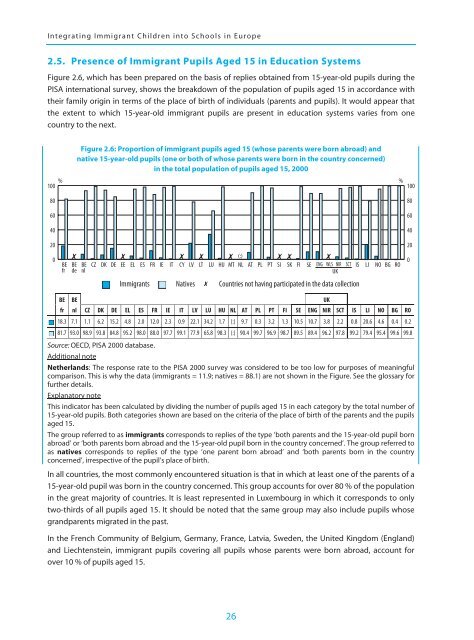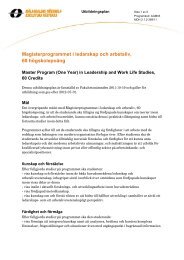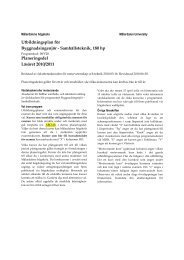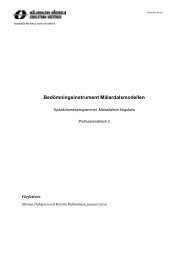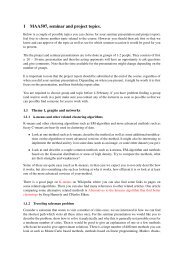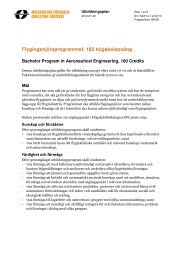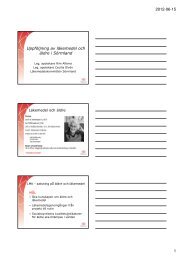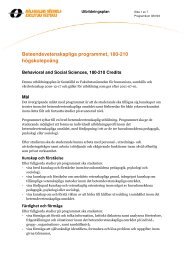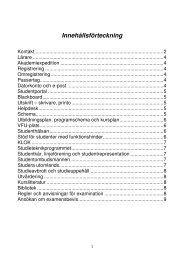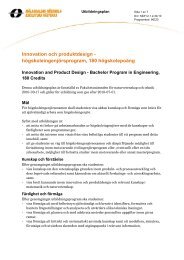Integrating Immigrant Children into Schools in Europe
Integrating Immigrant Children into Schools in Europe
Integrating Immigrant Children into Schools in Europe
Create successful ePaper yourself
Turn your PDF publications into a flip-book with our unique Google optimized e-Paper software.
<strong>Integrat<strong>in</strong>g</strong> <strong>Immigrant</strong> <strong>Children</strong> <strong><strong>in</strong>to</strong> <strong>Schools</strong> <strong>in</strong> <strong>Europe</strong>2.5. Presence of <strong>Immigrant</strong> Pupils Aged 15 <strong>in</strong> Education SystemsFigure 2.6, which has been prepared on the basis of replies obta<strong>in</strong>ed from 15-year-old pupils dur<strong>in</strong>g thePISA <strong>in</strong>ternational survey, shows the breakdown of the population of pupils aged 15 <strong>in</strong> accordance withtheir family orig<strong>in</strong> <strong>in</strong> terms of the place of birth of <strong>in</strong>dividuals (parents and pupils). It would appear thatthe extent to which 15-year-old immigrant pupils are present <strong>in</strong> education systems varies from onecountry to the next.806040Figure 2.6: Proportion of immigrant pupils aged 15 (whose parents were born abroad) andnative 15-year-old pupils (one or both of whose parents were born <strong>in</strong> the country concerned)<strong>in</strong> the total population of pupils aged 15, 2000% %100100806040200BEfr✗ ✗ ✗ ✗ ✗ (:) ✗ ✗ ✗CZ DK DE EE EL ES FR IE IT CY LV LT LU HU MT NL AT PL PT SI SK FI SE ENG WLSBEdeBEnlNIRUKSCTISLINOBGRO200<strong>Immigrant</strong>s Natives Countries not hav<strong>in</strong>g participated <strong>in</strong> the data collectionBE BE UKfr nl CZ DK DE EL ES FR IE IT LV LU HU NL AT PL PT FI SE ENG NIR SCT IS LI NO BG RO18.3 7.1 1.1 6.2 15.2 4.8 2.0 12.0 2.3 0.9 22.1 34.2 1.7 (:) 9.7 0.3 3.2 1.3 10.5 10.7 3.8 2.2 0.8 20.6 4.6 0.4 0.281.7 93.0 98.9 93.8 84.8 95.2 98.0 88.0 97.7 99.1 77.9 65.8 98.3 (:) 90.4 99.7 96.9 98.7 89.5 89.4 96.2 97.8 99.2 79.4 95.4 99.6 99.8Source: OECD, PISA 2000 database.Additional noteNetherlands: The response rate to the PISA 2000 survey was considered to be too low for purposes of mean<strong>in</strong>gfulcomparison. This is why the data (immigrants = 11.9; natives = 88.1) are not shown <strong>in</strong> the Figure. See the glossary forfurther details.Explanatory noteThis <strong>in</strong>dicator has been calculated by divid<strong>in</strong>g the number of pupils aged 15 <strong>in</strong> each category by the total number of15-year-old pupils. Both categories shown are based on the criteria of the place of birth of the parents and the pupilsaged 15.The group referred to as immigrants corresponds to replies of the type ‘both parents and the 15-year-old pupil bornabroad’ or ‘both parents born abroad and the 15-year-old pupil born <strong>in</strong> the country concerned’. The group referred toas natives corresponds to replies of the type ‘one parent born abroad’ and ‘both parents born <strong>in</strong> the countryconcerned’, irrespective of the pupil’s place of birth.In all countries, the most commonly encountered situation is that <strong>in</strong> which at least one of the parents of a15-year-old pupil was born <strong>in</strong> the country concerned. This group accounts for over 80 % of the population<strong>in</strong> the great majority of countries. It is least represented <strong>in</strong> Luxembourg <strong>in</strong> which it corresponds to onlytwo-thirds of all pupils aged 15. It should be noted that the same group may also <strong>in</strong>clude pupils whosegrandparents migrated <strong>in</strong> the past.In the French Community of Belgium, Germany, France, Latvia, Sweden, the United K<strong>in</strong>gdom (England)and Liechtenste<strong>in</strong>, immigrant pupils cover<strong>in</strong>g all pupils whose parents were born abroad, account forover 10 % of pupils aged 15.26


